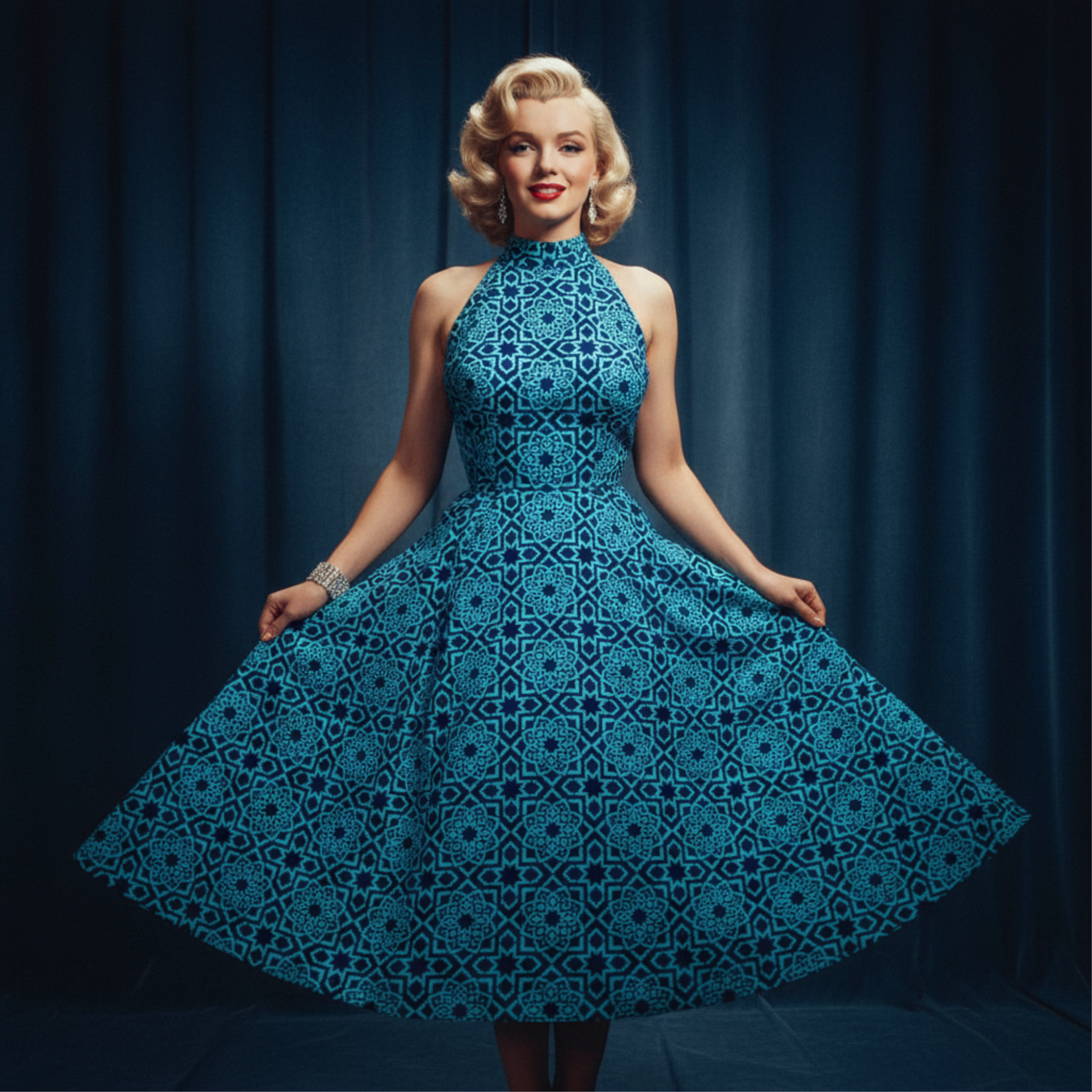Texture and Style Experiment, AI Generator Comparison
I compared how various Firefly image generators handle texture and style using a visual example and a text prompt. I used a geometric pattern as the image and paired it with this prompt:
"A glamorous woman wearing a 1950s Marilyn Monroe-inspired halter dress, crafted with the texture of the selected image, poses elegantly in a dimly lit studio. The lighting enhances the texture of the dress and the pleats of the skirt, evoking classic Hollywood fashion photography."
This experiment shows how Firefly boards combine images and text to create new, creative designs while keeping the original style.
Balanced style and realism.
Translated the pattern into fabric form.
Managed lighting and folds to evoke the mood of 1950s fashion photography.
The Outcome & Observations
Conclusion
Each AI image generator created different results from the same prompt and pattern, showing some common trends and unique features. This study helps understand how AI handles texture, lighting, and material details when combining text and images for fashion design.
Similarities
Across all nine models — Firefly 3, Firefly 3 Fast, Firefly 4, Firefly 4 Ultra, Flux 1.1 Ultra, Flux 1.1 Ultra Raw, Gemini 2.5 (Nanobanana), Runway Gen-4, and GPT Image — several consistent traits emerged:
Aesthetic Cohesion Over Separation: Each model favored a unified visual language, merging the dress texture with the background rather than creating substantial depth or material distinction.
Faithful Interpretation of Style: All generators successfully captured the 1950s glamour aesthetic, reflecting the prompt’s reference to Marilyn Monroe–inspired fashion through elegant posing, lighting, and composition.
Consistent Color Harmony: The blue tonal palette was well-preserved throughout, with most models using it to create mood, cohesion, and a cinematic quality.
High Visual Appeal: Despite technical variations, all outputs maintained substantial artistic value — each result could stand alone as a stylized piece of digital fashion imagery.
Differences
The distinctions between models primarily reflect differences in rendering precision, material realism, and stylistic approach:
Firefly Series (3–4 Ultra): These models excelled in pattern clarity and compositional harmony but tended to over-integrate the texture into both dress and background. The result leaned toward painterly or textile-like blending rather than fabric realism.
Flux 1.1 (Ultra and Raw): These versions achieved cinematic lighting and depth, handling folds and sheen beautifully. However, they also showed a slight tendency toward environmental merging, producing editorial-level polish with minimal separation.
Gemini 2.5 (Nanobanana): This generator produced the most balanced composition, with clean lighting and defined form, while still maintaining the same texture continuity that subtly merged figure and background.
Runway Gen-4: Stood out for its dynamic posing and studio-light realism, with well-defined shadows and movement, though it too favored overall cohesion over contrast.
GPT Image: Delivered one of the most visually refined and photorealistic interpretations, emphasizing clarity and fabric flow, yet followed the same merging pattern — prioritizing stylistic unity over textural isolation.
Synthesis
The experiment shows a common problem with current AI image generators: they focus more on blending things nicely rather than clearly showing different materials. Each model is good at lighting, composition, and mood, but few can clearly separate a patterned garment from its background.
This flaw reveals an interesting creative idea. The models see realism as design harmony, mixing the subject and background to create a painterly look like fashion illustrations rather than clear images. While they don’t meet the original technical goal, the results reveal how AI balances realism, unity, and artistic style.









